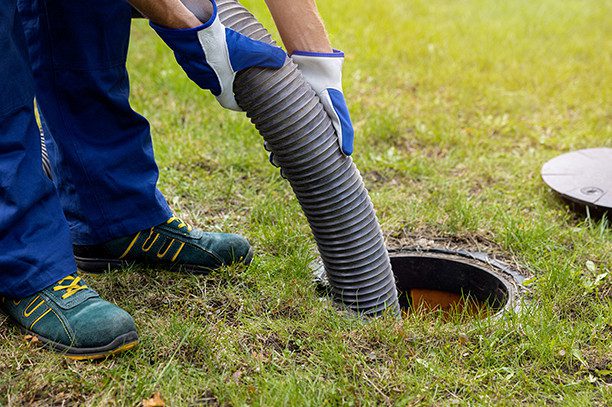Septic systems are essential for managing wastewater in properties not connected to municipal sewer systems. While they provide an efficient and eco-friendly solution, proper maintenance is crucial to ensure their longevity and functionality. One key component of septic system upkeep is regular septic pumping. This process not only prevents costly repairs but also safeguards your property and the surrounding environment from potential hazards. In this article, we explore the importance of septic pumping, how it works, and best practices for maintaining your system.
Understanding the Septic System
A septic system is a self-contained wastewater treatment setup typically used in rural or suburban areas. It consists of two main components: the septic tank and the drain field. Here’s a breakdown of how the system functions:
- Septic Tank: This underground tank is designed to collect and store wastewater from your property. It separates solids, which settle at the bottom, from liquids, which flow into the drain field.
- Sludge: The solid waste that settles at the bottom of the tank.
- Scum: Grease, oil, and lighter materials that float to the top.
- Effluent: The liquid that exits the tank and moves to the drain field.
- Drain Field: Also known as the leach field, this is where the effluent is dispersed into the soil. The soil acts as a natural filter, removing harmful bacteria and nutrients before the water reaches groundwater supplies.
Over time, sludge and scum accumulate in the septic tank, reducing its capacity and efficiency. Without regular pumping, this buildup can lead to system failure and environmental contamination.
Why Septic Pumping is Essential
Septic pumping involves the removal of sludge and scum from the septic tank, ensuring the system functions optimally. Neglecting this critical maintenance step can result in several issues:
- Preventing Blockages: Excessive sludge can clog the tank’s inlet and outlet pipes, causing backups in your plumbing system.
- Avoiding Drain Field Overload: When the tank is full, solids can escape into the drain field, leading to clogs and soil saturation.
- Minimizing Health Risks: Overflowing tanks can release harmful bacteria and pathogens, posing health risks to your household and community.
- Extending System Lifespan: Regular pumping reduces strain on the system, prolonging its operational life and preventing costly repairs.
How Septic Pumping Works
Septic pumping is a straightforward process carried out by professionals using specialized equipment. Here’s an overview of the steps involved:
- Inspection and Preparation: The technician locates the septic tank and assesses its condition, including sludge and scum levels.
- Pumping: A vacuum truck is used to remove all solid and liquid waste from the tank.
- Cleaning and Rinsing: The interior of the tank is cleaned and inspected for cracks or damage.
- Final Assessment: The technician evaluates the tank’s structural integrity and provides recommendations for future maintenance.
Septic pumping is a relatively quick process but plays a vital role in maintaining the health of your septic system.
How Often Should Septic Pumping Be Done?
The frequency of septic pumping depends on several factors, including the size of the tank, the number of occupants in the household, and water usage habits. On average, most systems require pumping every 3-5 years. However, certain conditions may necessitate more frequent servicing:
- High Water Usage: Households with high water consumption may need pumping every 2-3 years.
- Smaller Tanks: Smaller tanks fill up faster and may require more frequent attention.
- Presence of Non-Biodegradable Waste: Flushing items like wipes, feminine hygiene products, or grease can accelerate the need for pumping.
Consulting with a professional service like Portable Restroom Solutions ensures you establish an appropriate schedule for your system.
Signs Your Septic System Needs Pumping
Recognizing the early signs of a full septic tank can prevent emergencies and costly repairs. Keep an eye out for the following indicators:
- Slow Drains: If sinks, showers, or toilets are draining slower than usual, it may indicate a backup in the septic system.
- Foul Odors: A strong, unpleasant smell around the tank or drain field suggests an overflow issue.
- Pooling Water: Standing water near the drain field or tank area is a sign of system failure.
- Lush Grass Growth: While green grass may seem like a good sign, unusually lush growth around the septic area could indicate a leak.
- Sewage Backups: This is the most severe warning sign and requires immediate professional attention.
Best Practices for Maintaining Your Septic System
In addition to regular pumping, there are several measures homeowners can take to ensure the longevity and efficiency of their septic systems:
- Monitor Water Usage: Reducing water consumption lessens the strain on the septic system. Fix leaks promptly and consider installing water-saving fixtures.
- Dispose of Waste Properly: Avoid flushing non-biodegradable items, grease, and chemicals down the drain.
- Protect the Drain Field: Refrain from parking vehicles or placing heavy objects over the drain field to prevent soil compaction.
- Schedule Routine Inspections: Regular check-ups by professionals can identify potential issues before they escalate.
The Role of Professional Services
Professional septic pumping services like Portable Restroom Solutions play a crucial role in maintaining system health. With their expertise and specialized equipment, they ensure your septic tank is thoroughly cleaned and inspected. Additionally, they provide valuable advice on best practices for system upkeep, helping you avoid common pitfalls and maximize efficiency.
Environmental Benefits of Regular Septic Pumping
Septic pumping not only benefits your household but also contributes to environmental protection. By preventing leaks and overflows, it reduces the risk of groundwater contamination. Proper waste disposal also minimizes the release of harmful bacteria and nutrients into local ecosystems, preserving water quality for future generations.
Common Misconceptions About Septic Pumping
There are several myths surrounding septic system maintenance that can lead to neglect or improper care. Let’s debunk some of the most common misconceptions:
- Myth: Additives Replace Pumping: While certain additives claim to break down waste, they cannot eliminate the need for regular pumping.
- Myth: Small Leaks Are Harmless: Even minor leaks can lead to significant damage over time, affecting the drain field and surrounding soil.
- Myth: Pumping is Only Necessary When Problems Arise: Preventative maintenance is essential to avoid costly repairs and system failure.
Conclusion
Septic pumping is a vital aspect of maintaining your septic system for long-term efficiency and environmental safety. By understanding how the process works and adhering to a regular maintenance schedule, you can avoid costly repairs, protect your property, and ensure a reliable wastewater management solution. Professional services like Portable Restroom Solutions offer the expertise and support needed to keep your system in top condition, giving you peace of mind and a healthier environment for years to come. Taking proactive steps today will save you from unnecessary stress and expenses in the future.
Read more from techbullion



































